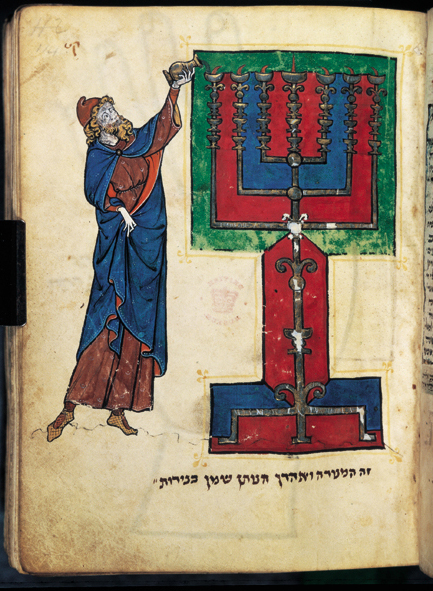Image Details

British Library, Add. MS. 11639
“This is the menorah and Aaron, who pours oil into the lamps,” reads the Hebrew inscription on this late-13th-century manuscript illumination from northeastern France (cf. Numbers 8:1–4). Made of the finest vellum, the manuscript measures only 6 by 4.5 inches.
As prescribed by God, each of the outer branches of the pure gold lamp stand, made for the Desert Tabernacle by the artisan Bezalel, has “three cups shaped like almond blossoms” and the main stem has four cups (Exodus 25:33–34). According to Leviticus 24:3–4, God instructed Aaron to burn clear olive oil in the menorah’s seven lamps every evening.
While in Deuteronomy (primarily attributed to the Deuteronomic source) any Levite may serve as priest, in P (especially Numbers 17:1–5) only Aaron and his sons may perform sacrifices at the altar. This diversion from D’s law is taken to indicate that at least part of P post-dates D, which is generally dated to the seventh century B.C.E.
